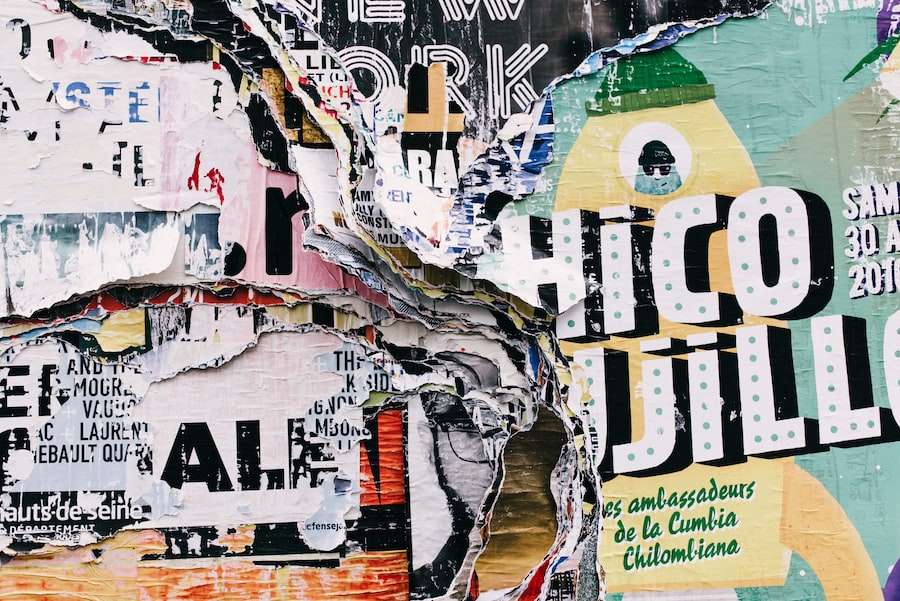Exploring the Enigmatic World of Surrealism Symbolism in Art
Surrealism is an art movement that emerged in the early 20th century and has had a profound impact on the art world. It is characterized by its exploration of the subconscious mind, dream imagery, and the use of unconventional techniques. Surrealism defies traditional artistic boundaries and challenges viewers to question their perception of reality. This article will delve into the origins of Surrealism, its techniques, and its influence on contemporary art and pop culture.
Surrealism: A Movement that Defies Conventional Artistic Boundaries
Surrealism is a movement that defies conventional artistic boundaries by pushing the limits of imagination and challenging traditional artistic techniques. Surrealist artists sought to explore the depths of the subconscious mind and tap into the realm of dreams and fantasies. They rejected rationality and embraced the irrational, creating artworks that were often bizarre, dreamlike, and even disturbing.
One example of Surrealist art that challenges conventions is Salvador Dalí’s “The Persistence of Memory.” This iconic painting features melting clocks draped over various objects in a barren landscape. The distorted and surreal imagery in this painting defies traditional notions of perspective and reality. It forces viewers to question their perception of time and space, inviting them into a world where logic is suspended.
The Origins of Surrealism: A Response to the Trauma of World War I
The origins of Surrealism can be traced back to the aftermath of World War
The war had a profound impact on society, leaving many feeling disillusioned and questioning the rationality of human existence. In response to this trauma, Surrealist artists sought to explore the depths of the human psyche and tap into the unconscious mind as a means of expressing their innermost thoughts and emotions.
The horrors of war also led to a rejection of traditional artistic techniques and a desire to break free from societal norms. Surrealist artists embraced automatism, a technique that involved creating art without conscious control or premeditation. This allowed them to tap into their subconscious and create artworks that were raw and unfiltered expressions of their inner worlds.
Surrealist Techniques: Automatism, Collage, and Decalcomania
Surrealist art is characterized by its use of unconventional techniques that challenge traditional artistic practices. Automatism is one such technique that Surrealist artists embraced. It involves creating art without conscious control or premeditation, allowing the artist to tap into their subconscious mind and create works that are spontaneous and unfiltered.
Collage is another technique commonly used by Surrealist artists. It involves combining different elements, such as images, text, and objects, to create a new composition. Collage allows artists to create juxtapositions and unexpected connections, challenging viewers to question the meaning behind the various elements.
Decalcomania is a technique that involves pressing paint between two surfaces and then separating them to create random patterns. Surrealist artists often used this technique to create abstract and dreamlike imagery. The random patterns created through decalcomania allowed artists to tap into their subconscious and explore the depths of their imagination.
The Role of the Unconscious Mind in Surrealist Art

The unconscious mind plays a central role in Surrealist art. Surrealist artists sought to tap into the depths of their subconscious and explore the hidden desires, fears, and fantasies that lie beneath the surface of consciousness. They believed that by accessing the unconscious mind, they could reveal deeper truths about human existence.
One example of Surrealist art that explores the unconscious mind is René Magritte’s “The Treachery of Images.” This painting features a realistic depiction of a pipe with the caption “Ceci n’est pas une pipe” (This is not a pipe) written below it. Magritte challenges viewers to question the nature of reality and the relationship between images and language. By juxtaposing the image of a pipe with the statement that it is not a pipe, Magritte invites viewers to consider the role of perception and interpretation in shaping our understanding of the world.
Symbolism in Surrealist Art: Decoding the Hidden Meanings
Symbolism is a key element in Surrealist art, as artists sought to convey hidden meanings and explore the depths of the human psyche. Surrealist artists often used symbols and metaphors to express their innermost thoughts and emotions, creating artworks that were rich in meaning and open to interpretation.
One example of Surrealist art that contains hidden meanings is Max Ernst’s “The Elephant Celebes.” This painting features a distorted elephant-like figure surrounded by various objects and symbols. The elephant is a recurring motif in Surrealist art and often represents the subconscious mind. The various objects and symbols in the painting can be interpreted as representations of the artist’s inner world, inviting viewers to decode the hidden meanings behind the imagery.
The Use of Dream Imagery in Surrealist Art
Dream imagery is a prominent feature in Surrealist art, as artists sought to tap into the realm of dreams and fantasies. Surrealist artists believed that dreams held deep insights into the human psyche and could reveal hidden desires, fears, and anxieties.
One example of Surrealist art that incorporates dream imagery is Joan Miró’s “The Harlequin’s Carnival.” This painting features a whimsical and fantastical scene filled with strange creatures, vibrant colors, and abstract forms. The dreamlike quality of this painting invites viewers into a world where logic is suspended and imagination reigns supreme.
Surrealist Portraiture: Distorting Reality to Convey Inner Truths
Surrealist portraiture is characterized by its distortion of reality in order to convey inner truths. Surrealist artists sought to go beyond surface appearances and capture the essence of their subjects’ inner worlds.
One example of Surrealist portraiture that distorts reality is Frida Kahlo’s self-portrait, “The Two Fridas.” This painting features two versions of the artist sitting side by side, each with their own unique characteristics and symbolism. The distorted and surreal imagery in this painting reflects Kahlo’s inner struggles and the duality of her identity.
Surrealist Landscapes: Exploring the Subconscious Mind through Nature
Surrealist landscapes often serve as a means for artists to explore the subconscious mind through the depiction of nature. Surrealist artists sought to tap into the primal and instinctual aspects of human existence by using nature as a metaphor for the inner world.
One example of a Surrealist landscape that explores the subconscious mind is Yves Tanguy’s “Indefinite Divisibility.” This painting features a barren landscape with strange rock formations and organic shapes. The dreamlike quality of this painting invites viewers to delve into their own subconscious and explore the depths of their imagination.
The Influence of Surrealism on Contemporary Art and Pop Culture
Surrealism has had a profound influence on contemporary art and pop culture. Its exploration of the subconscious mind, dream imagery, and unconventional techniques continue to inspire artists across various mediums.
One example of contemporary art that shows the influence of Surrealism is the work of Japanese artist Yayoi Kusama. Kusama’s installations often feature repetitive patterns, vibrant colors, and organic forms, creating immersive environments that challenge viewers’ perception of reality. Her use of repetition and pattern can be seen as a nod to Surrealist techniques such as automatism and decalcomania.
In pop culture, Surrealism has influenced various forms of media, including film, music, and fashion. Filmmakers such as David Lynch have embraced Surrealist aesthetics in their work, creating dreamlike narratives that challenge traditional storytelling conventions. Musicians such as Björk have incorporated Surrealist imagery and themes into their music videos and performances, creating visually stunning and thought-provoking experiences. Fashion designers such as Elsa Schiaparelli and Alexander McQueen have also drawn inspiration from Surrealism, creating garments that challenge traditional notions of beauty and form.
The Legacy of Surrealism: Inspiring Creativity and Challenging Conventions
The legacy of Surrealism is one of inspiring creativity and challenging conventions. Surrealist artists pushed the boundaries of art and encouraged viewers to question their perception of reality. Their exploration of the subconscious mind and use of unconventional techniques continue to inspire artists to this day.
Surrealism has also had a lasting impact on the art world, influencing subsequent art movements such as Abstract Expressionism, Pop Art, and Conceptual Art. The emphasis on the inner world, the exploration of the subconscious mind, and the use of unconventional techniques can be seen in the works of artists such as Jackson Pollock, Andy Warhol, and Marina Abramović.
In conclusion, Surrealism is an art movement that defies conventional artistic boundaries and challenges viewers to question their perception of reality. Its exploration of the subconscious mind, dream imagery, and use of unconventional techniques have had a profound impact on the art world. Surrealism continues to inspire creativity and challenge conventions, leaving a lasting legacy that can be seen in contemporary art and pop culture.
If you’re interested in exploring the symbolism behind Surrealism in art, you might also find the article on the symbolism of the moon fascinating. The moon has long been a symbol of mystery, femininity, and the subconscious mind, making it a perfect subject for surrealist artists. To delve deeper into this topic, check out the article “What Does the Moon Symbolize?” on Symbolism Hub.
FAQs
What is Surrealism Symbolism in Art?
Surrealism Symbolism in Art is a movement in art that emerged in the early 20th century, characterized by the use of dreamlike imagery, symbolism, and the exploration of the subconscious mind.
What are the key features of Surrealism Symbolism in Art?
The key features of Surrealism Symbolism in Art include the use of dreamlike imagery, symbolism, the exploration of the subconscious mind, and the rejection of traditional artistic techniques and styles.
Who were the major artists associated with Surrealism Symbolism in Art?
The major artists associated with Surrealism Symbolism in Art include Salvador Dali, Max Ernst, Rene Magritte, and Joan Miro.
What is the significance of Surrealism Symbolism in Art?
Surrealism Symbolism in Art is significant because it challenged traditional artistic techniques and styles, and opened up new avenues for artistic expression. It also explored the subconscious mind and the world of dreams, which had not been previously explored in art.
What are some examples of Surrealism Symbolism in Art?
Some examples of Surrealism Symbolism in Art include Salvador Dali’s “The Persistence of Memory,” Rene Magritte’s “The Treachery of Images,” and Max Ernst’s “The Elephant Celebes.”
How did Surrealism Symbolism in Art influence other art movements?
Surrealism Symbolism in Art influenced other art movements such as Abstract Expressionism and Pop Art, which also rejected traditional artistic techniques and styles and explored new avenues for artistic expression.





